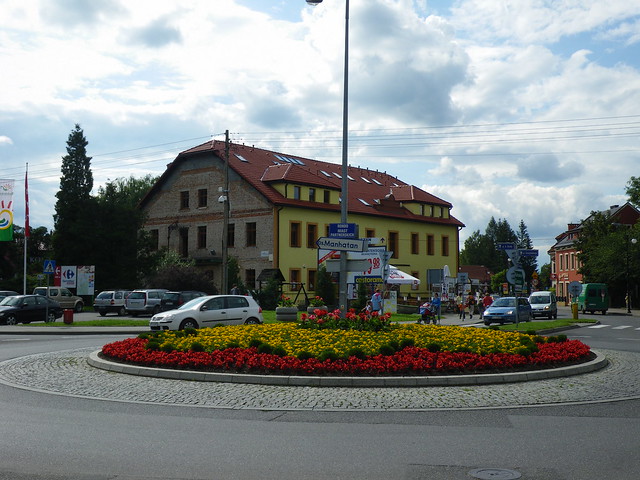
(Image credit: photoburst)
Stop lights are a rule. They are a standard system used worldwide as a solution to the problem of people getting into accidents at intersections.
However, what most people don’t know (unless you have travelled a lot, or lived abroad) is that different cultures treat stop lights differently, particularly for pedestrians. In New York City, the red light means "walk across unless someone is driving through right now" on a cross town street, and "don’t walk" on a uptown/downtown street. In Vancouver, the red light means "be careful crossing the street" if it is a quiet street, and "don’t cross" (unless you are a rebel) for a busy street. In London, a red light means "stay the hell away from the road" because cars will run you down if you try and cross, but a crosswalk means, "expect traffic to slam on their brakes to let you cross". In Bangkok, you don’t cross at intersections, you use the overhead walkways. In Hamburg, the red light means, do not cross under any circumstances, even if you can’t see traffic in either direction for miles. In Rio de Janeiro, at night time, the red light means, honk and drive on through, as no one wants to stop in case they are carjacked (anyone who walks around Rio at night time is crazy).
The point is, this seemingly universal symbol still has a local meaning, even though effort has been made to adopt the same system all over the world. Rules are culturally situated.
Our society’s push to standardize education needs to recognize that even in a standardized system, there will be local variance. Schools, just like municipalities adopting traffic lights, need to work the external system into their local framework, and the expectation that every school should come up with the same solution is flawed. In fact, some schools may have very different approaches to applying the standardized framework to their local community.
Some municipalities have nearly abandoned the traffic light as a form of managing traffic at intersections.

What is the parallel to the round-about in education? Is this completely different than standardization? Should our system have the flexibility to allow more schools to choose different solutions to education?
Ed says:
Hi David
Great point. I have travelled in many countries and usually assume the red light means don’t cross under any circumstances, as it does in Australia!
Even within schools, there doesn’t need to be standardization. Here’s one of the things I love about the PYP. We plan collaboratively, pooling ideas from a whole team, but we expect that a unit will unfold differently in every class, depending on where the learners’ interest lies, what questions they ask, who the talk to, what they wonder.
It works best in classes where teachers are willing to let go, hand over some control of learning to the learners, rather than demanding that everyone does the same thing, at the same time, in the same way.
September 2, 2011 — 6:32 pm
Leslie says:
This an excellent analogy. I feel this same anaolgy can be applied to Local Bargaining and the Split of issues. The Government needs to recognize that Surrey teachers have different needs than Bella Coola.
September 4, 2011 — 12:21 am
Omar Pacheco says:
How would you apply that to the business world?
December 4, 2012 — 9:07 pm